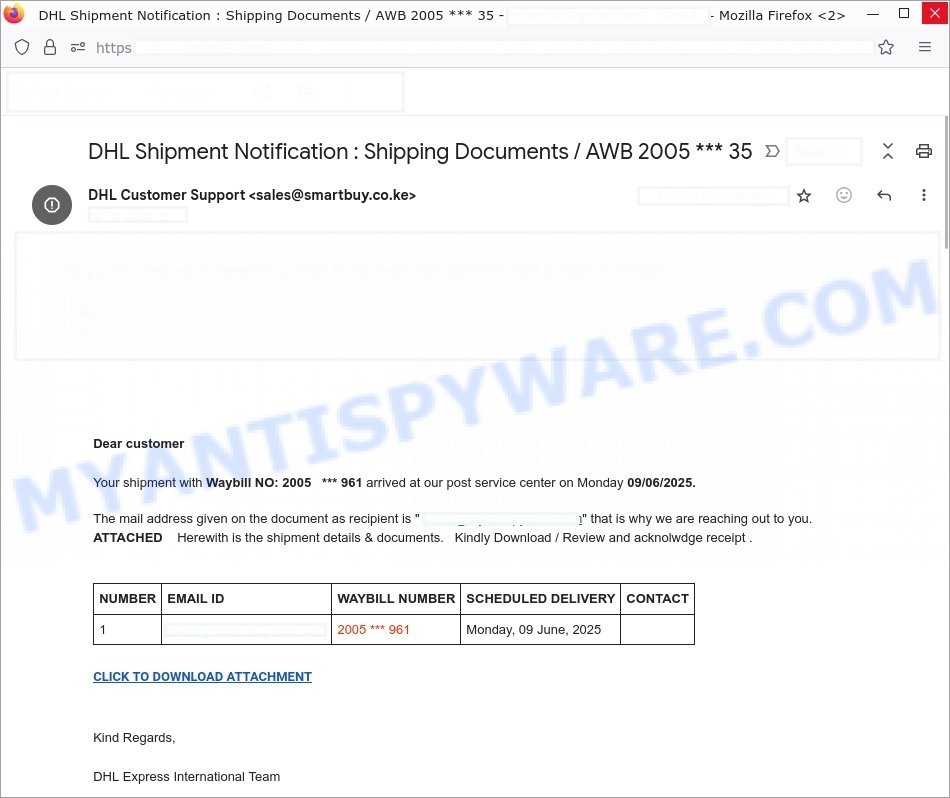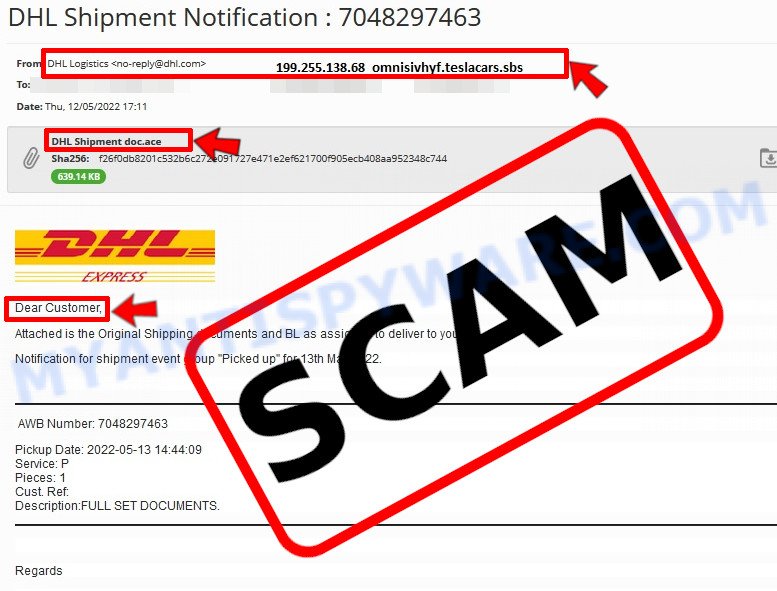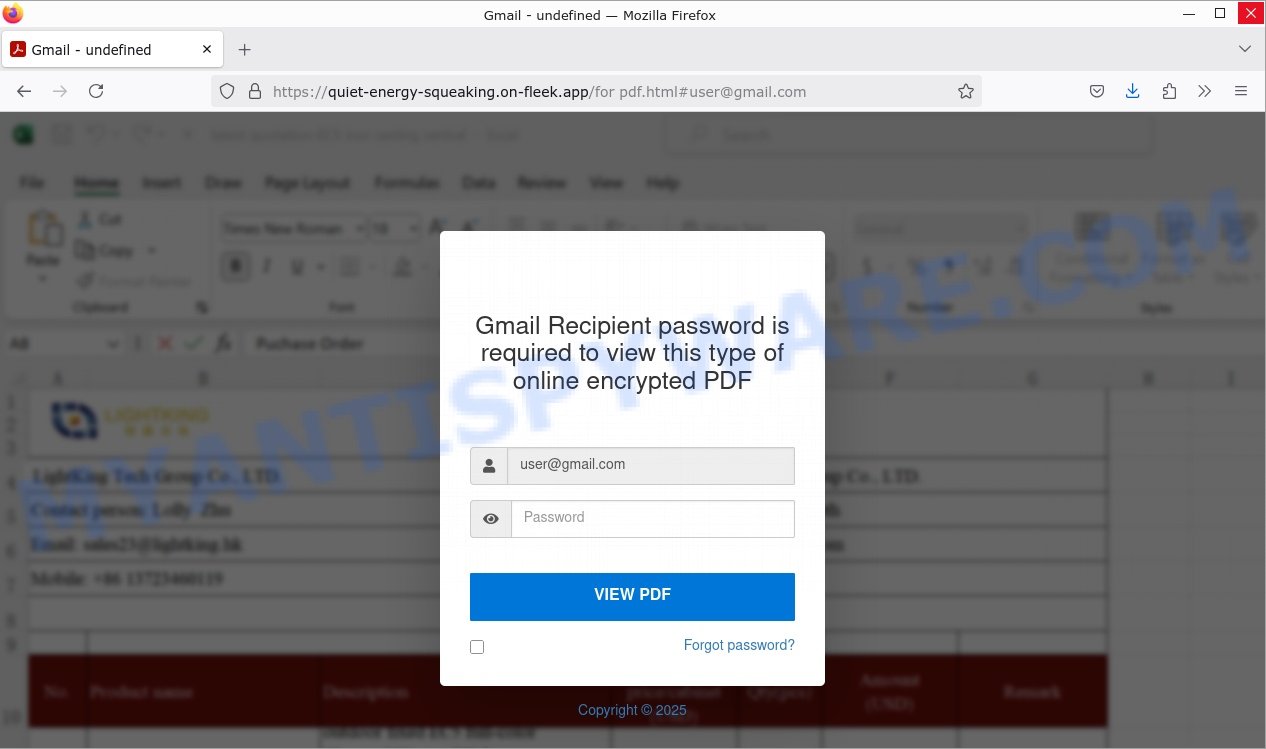Have you recently received an email that looks like a DHL shipment notification, telling you about a package with a waybill number and asking you to download shipping documents? The email might come from an address like sales@smartbuy.co.ke and say that your shipment arrived at a post service center, with a link to download an attachment for more details.
Question: Is this email really from DHL, and should you trust the link and attachment to get your shipping documents?
Investigation Findings: This email is a scam. The link in the message leads to a fake website that asks for your email login details, trying to steal your personal information. The sender’s email is not an official DHL address, and the message contains mistakes and odd phrasing. DHL does not send shipping documents this way.

Answer: This email is a fraudulent DHL shipment scam. 💡 To protect yourself from scams like this, never click links or download files from unexpected emails that ask for your personal information. Always check the sender’s address carefully. If you are waiting for a DHL package, go directly to the official DHL website or contact DHL customer service through their verified contacts. Additionally, use strong passwords and enable two-factor authentication on your email accounts to keep your information safe.
A typical “DHL Shipment Notification Shipping Documents” scam email reads as follows:
Subject: DHL Shipment Notification : Shipping Documents / AWB 2005 *** 35
DHL Customer Support
Dear customer
Your shipment with Waybill NO: 2005 *** 961 arrived at our post service center on Monday 09/06/2025.
The mail address given on the document as recipient is ” xxxxxxx” that is why we are reaching out to you.
ATTACHED Herewith is the shipment details & documents. Kindly Download / Review and acknolwdge receipt .NUMBER EMAIL ID WAYBILL NUMBER SCHEDULED DELIVERY CONTACT
1 xxxxxxx2005 *** 961 Monday, 09 June, 2025CLICK TO DOWNLOAD ATTACHMENT
Kind Regards,
DHL Express International Team
2024 © DHL International Shipping. All rights reserved.
🚨 Is the DHL Shipment Notification Email a Scam?
Beware of emails claiming to be DHL shipment notifications that use deceptive tactics to trick recipients into downloading malicious attachments or providing personal login credentials. These scam emails try to create a false sense of urgency by referencing fake shipment details and urging you to download attachments or click links that lead to phishing websites.
Key Red Flags of the DHL Shipment Notification Email Scam:
- 📧 Suspicious Sender Address: The email often comes from unverified, unrelated, or odd-looking email addresses such as
sales@smartbuy.co.ke, rather than official DHL domains. - 📄 Fake Shipment Details: Includes generic or vague information such as partial waybill numbers and incorrect or inconsistent dates to appear legitimate without verifiable tracking data.
- ⚠️ Urgent Download Requests: Pushes recipients to download “shipment details” or “shipping documents” via an embedded link or attachment, which are actually harmful files or direct you to phishing websites.
- 🔗 Phishing Websites: The download links redirect users to counterfeit email login portals or malicious websites designed to steal login credentials, personal data, or install malware on your device.
- ✉️ Poor Grammar and Formatting: The email may contain spelling mistakes, awkward phrasing (e.g., “acknolwdge receipt”), inconsistent spacing, and unprofessional formatting, which are common in scam communications.
- 👤 Impersonation of DHL Branding: Uses DHL logos, copyright notices, and “official” signatures to falsely appear as legitimate DHL communication, but lacks proper contact information or verifiable links.
In summary, this type of DHL shipment notification email is a phishing scam designed to steal your login credentials or infect your device. Always verify shipment details directly through official DHL websites or customer service channels. Do not click on suspicious links or download attachments from unknown or unexpected emails. If you receive such an email, delete it immediately and report it to DHL’s official fraud reporting service.
📧 What to Do When You Receive the “DHL Shipment Notification Shipping Documents” Scam Email
We advise everyone who receives this email to follow the simple steps below to protect yourself from potential scams:
- ❌ Do not believe this email.
- 🔒 NEVER share your personal information and login credentials.
- 📎 Do not open unverified email attachments.
- 🚫 If there’s a link in the scam email, do not click it.
- 🔍 Do not enter your login credentials before examining the URL.
- 📣 Report the scam email to the FTC at www.ftc.gov.
If you accidentally click a phishing link or button in the “DHL Shipment Notification Shipping Documents” Email, suspect that your computer is infected with malware, or simply want to scan your computer for threats, use one of the free malware removal tools. Additionally, consider taking the following steps:
- 🔑 Change your passwords: Update passwords for your email, banking, and other important accounts.
- 🛡️ Enable two-factor authentication (2FA): Add an extra layer of security to your accounts.
- 📞 Contact your financial institutions: Inform them of any suspicious activity.
- 🔄 Monitor your accounts: Keep an eye on your bank statements and credit reports for any unusual activity.
🔍 How to Spot a Phishing Email
Phishing emails often share common characteristics; they are designed to trick victims into clicking on a phishing link or opening a malicious attachment. By recognizing these signs, you can detect phishing emails and prevent identity theft:

💡 Here Are Some Ways to Recognize a Phishing Email
- ✉️ Inconsistencies in Email Addresses: The most obvious way to spot a scam email is by finding inconsistencies in email addresses and domain names. If the email claims to be from a reputable company, like Amazon or PayPal, but is sent from a public email domain such as “gmail.com”, it’s probably a scam.
- 🔠 Misspelled Domain Names: Look carefully for any subtle misspellings in the domain name, such as “arnazon.com” where the “m” is replaced by “rn,” or “paypa1.com,” where the “l” is replaced by “1.” These are common tricks used by scammers.
- 👋 Generic Greetings: If the email starts with a generic “Dear Customer”, “Dear Sir”, or “Dear Madam”, it may not be from your actual shopping site or bank.
- 🔗 Suspicious Links: If you suspect an email may be a scam, do not click on any links. Instead, hover over the link without clicking to see the actual URL in a small popup. This works for both image links and text links.
- 📎 Unexpected Attachments: Email attachments should always be verified before opening. Scan any attachments for viruses, especially if they have unfamiliar extensions or are commonly associated with malware (e.g., .zip, .exe, .scr).
- ⏰ Sense of Urgency: Creating a false sense of urgency is a common tactic in phishing emails. Be wary of emails that claim you must act immediately by calling, opening an attachment, or clicking a link.
- 📝 Spelling and Grammar Errors: Many phishing emails contain spelling mistakes or grammatical errors. Professional companies usually proofread their communications carefully.
- 🔒 Requests for Sensitive Information: Legitimate organizations typically do not ask for sensitive information (like passwords or Social Security numbers) via email.
Conclusion
The DHL Shipment Notification Shipping Documents Email Scam is a deceptive phishing attempt designed to steal your personal login credentials. This fraudulent email pretends to be from DHL Customer Support and claims to provide shipment details and documents linked to a supposed package delivery. The email urges recipients to click on an attachment link to download shipment information, but this link leads to a malicious fake email web client page.
The scammers behind this phishing email use urgent language and seemingly legitimate details such as waybill numbers and delivery dates to trick you into providing sensitive information like your email login credentials. The email address (e.g., sales@smartbuy.co.ke) and spoofed branding attempt to mimic official DHL communication to gain your trust. However, there is no actual shipment or delivery related to the recipient.
Bottom Line: Do not click on any links or download attachments in suspicious DHL shipment notification emails. Always verify shipment details by logging directly into DHL’s official website or contacting DHL customer service through known official channels. Be cautious of unsolicited emails requesting personal information or login credentials—these are classic signs of phishing scams aiming to steal your data. Staying vigilant and avoiding interaction with such fraudulent emails will help you protect your identity and prevent cybercrime.













